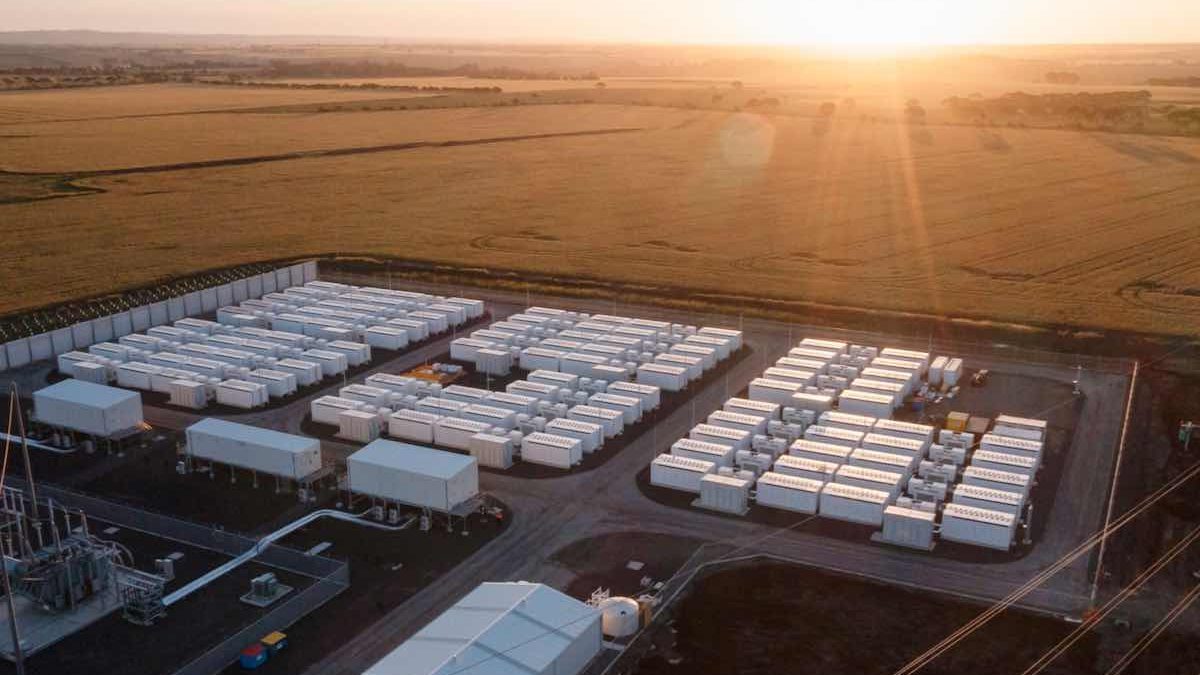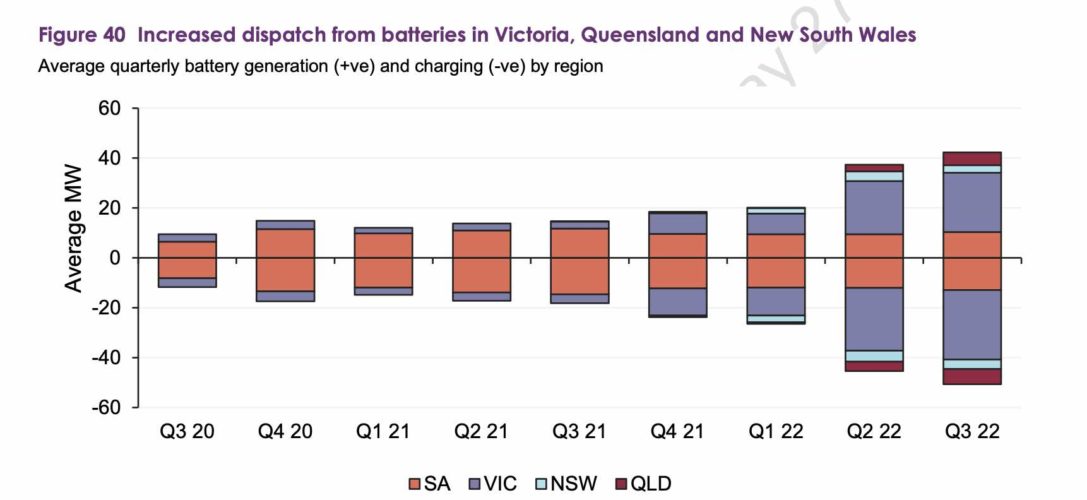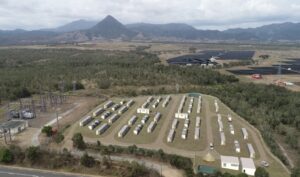Australia;s growing fleet of big battery projects have nearly trebled their revenues from a year ago, with a growing emphasis on storing and shifting energy as their impact on the national grid grows.
The latest Quarterly Energy Dynamics report from the Australian Energy Market Operator shows that the nine big batteries operating in Australia’s main grid secured revenues of $37 million in the September quarter, more than two and a half times the level of a year ago, although slightly down from $41 million in the June quarter.
The most striking aspect of this revenue growth is the growing importance of energy arbitrage, where battery operators buy (or charge) at a low price, usually when demand is weak and wind and solar production high), and sells at a higher price (usually in peak demand).
This energy arbitrage accounted for $19 million of revenue in the third quarter, with frequency control and ancillary services – the grid service that drove most earnings of the early batteries – accounting for just $3 million.

As this graph above illustrates, it really is a big shift over the past 12 months, driven by the increased volatility in prices, and the commissioning late last year of the biggest battery in the country to date, Neoen’s 300MW/450MWh Victoria Big Battery near Geelong.
It should be noted that a sizeable chunk of the VBB revenue comes from a contract – with AEMO – to reserve 250MW of its capacity to back up the main network link between NSW and Victoria. Such out of market contracts are not reflected in the above table.
The other interesting graph is Figure 40, (above) which shows the growth in battery dispatch over the last two years.
As can ben seen, 2020 and 2021 were dominated by South Australian batteries, mostly the original Tesla big battery, aka Hornsdale Power Reserve.
The start of the VBB started to change the balance late last year, but now battery storage is present in all four mainland states of the main national grid, with the opening of the Wandoan battery in Queensland, and the Wallgrove battery in NSW.
Pumped hydro facilities also enjoyed strong revenues in the third quarter, pulling in $60 million, just marginally below the record levels of the June quarter.
Wivenhoe in Queensland had the biggest increase in revenues (+$28.6 million) while Shoalhaven lifted revenues by $14.4 million, mostly in July as the market volatility was at its most intense.
AEMO noted that Wivenhoe’ dispatch rates were double the levels of Q3 last year, and reached its highest generation and pumping for any quarter since the start of the National Electricity Market more than two decades ago.









